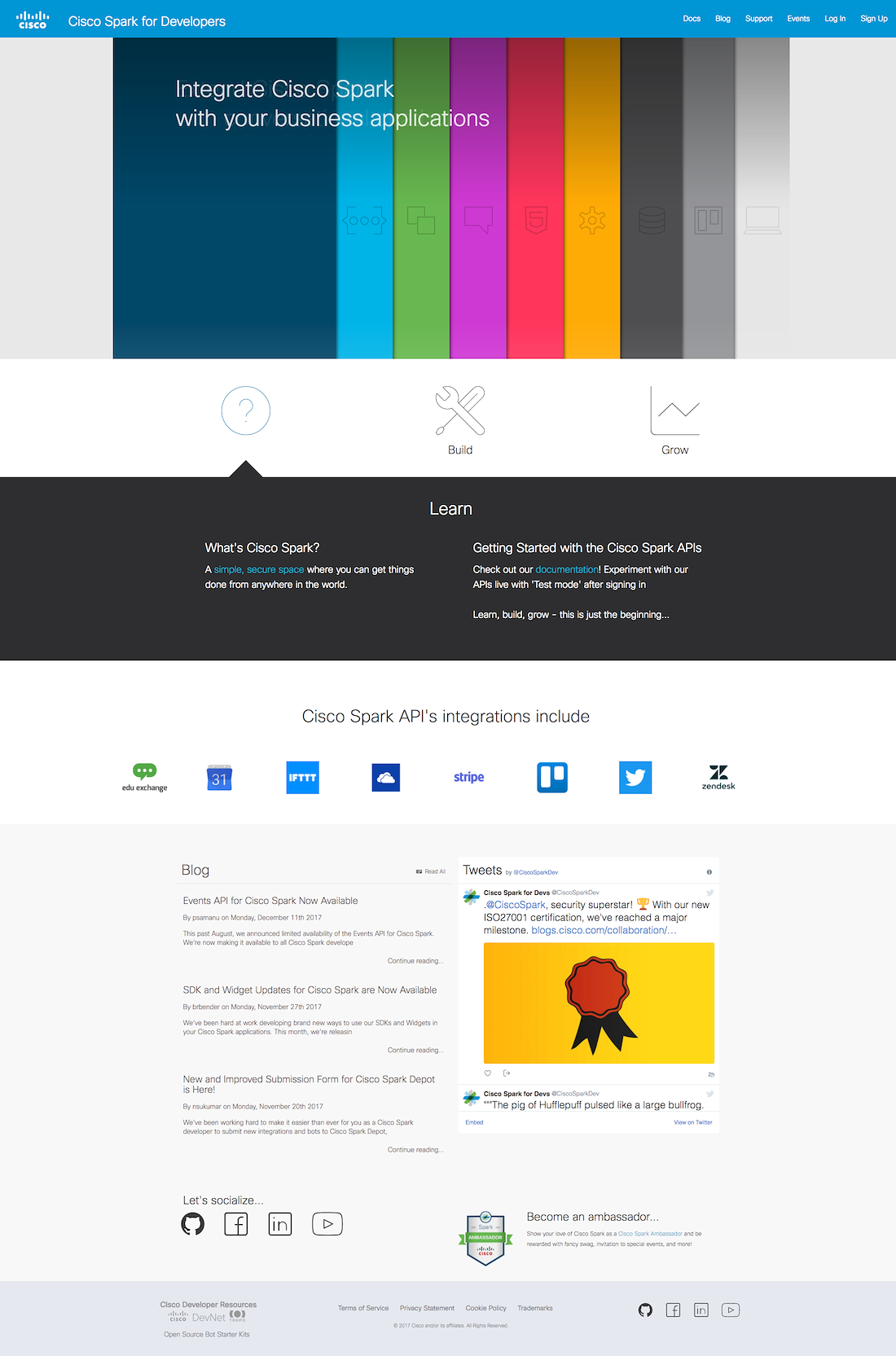I led UX design and content design on projects for Spark/Webex in the areas of cloud computing and team collaboration.
Projects
— PROJECT
Spark Control Hub
— ROLES
UX design
UX writing
User testing
Problem: IT Admins needed a way to securely deploy and manage Spark within their organization.
Solution: Create a management tool that allows admins to control access and grant permission based on the user's level, in accordance with the company’s legal and compliance frameworks.
Even though the goal was simple, the design was complex: IT Admins needed a way to securely deploy and manage Spark within their organization, and a lot depended on correctly setting permissions for users in accordance with the company’s legal and compliance frameworks. To be successful, a robust, user-friendly, minimum-friction tool was required that would allow admins to grant varying levels of access to different groups and personnel within the organization. Due to this, one of the most important things admins would do in Control Hub would be to configure permissions and manage users.
Our project required working with multiple teams across Cisco Cloud Collaboration and getting their input into the design of how this tool would work. We also spoke to a total of 5 admins to get their input on their requirements, and then later got their feedback through user testing prototypes with them. The results of these tests allowed us to iterate on the design to refine it as much as possible within the constraints of time and resources.
Today, Spark Control Hub has been merged into Webex, and is known as Webex Control Hub.







— PROJECT
Spark for Developers
— ROLES
UX design
UX writing
User research
Design sprint facilitation
Problem:
Spark was losing market share to competing products due to a lack of a cohesive, centralized information source for developers. Developers were not clear about Spark's API capabilities as a communication component due to this lack of information, which meant that they were not considering Spark for their products.
Solution:
Design and build a knowledge base and community that would serve as a central repository of information, help articles, and Spark-related downloads. Developers could learn about Spark, try it for their products, see the benefits it brought to their product, and then choose to use it.
We were a team comprised of product design/content design, product management, and engineering management. Our intent was to create a knowledge base that went beyond a bunch of help pages. We wanted to create something that could scale, and help our customer base of developers go from having no knowledge to being fully conversant with Spark in the least amount of time, with the least amount of friction.
Key Steps:
1. Research: We needed to understand what developers required in a knowledge base such as this, and what they valued. We spoke to 8 developers to get their input, and this served as the basis of our requirements.
2. Design Sprint: As a team, we decided to use a 3-day design sprint to generate ideas and design avenues. I was tasked with leading the design sprint in Austin, TX. We got together and hashed out everything we could fit into that time span, including user testing of designs with representative users.

3. Wireframing, Interaction design, Content design: Once there was a solid foundation to base work on, I went to work to bring everything together in a seamless flow. I worked on navigation, page elements, and interaction design of the product.
I also wrote all content for messaging, labels, and navigation.

4. Visual design: Working with a visual designer, the product got its final visual treatment and was ready to build.
5. Build: The final step… I followed progress to ensure that everything was built as designed, and helped by testing features to catch any bugs. Bugs found along the way were squashed without mercy.
6. Release: The final product was released, and Cisco Spark finally had a home all of its own, where developers could acces everything they needed to learn about, build, and grow their business, all by using Spark.

